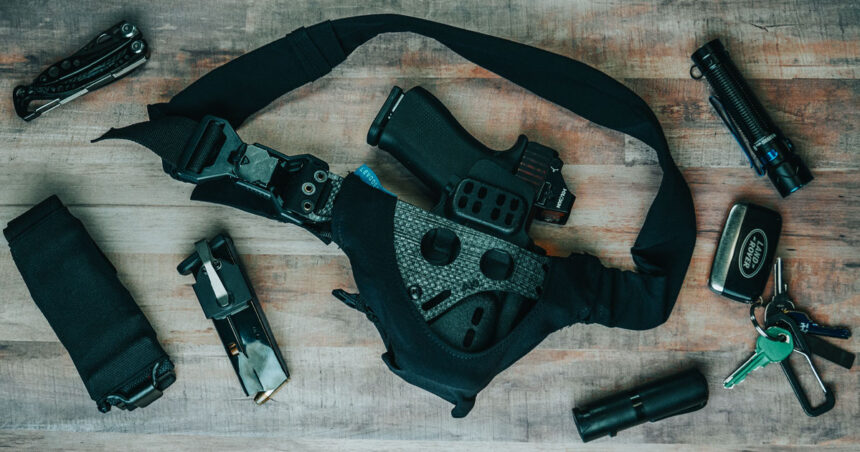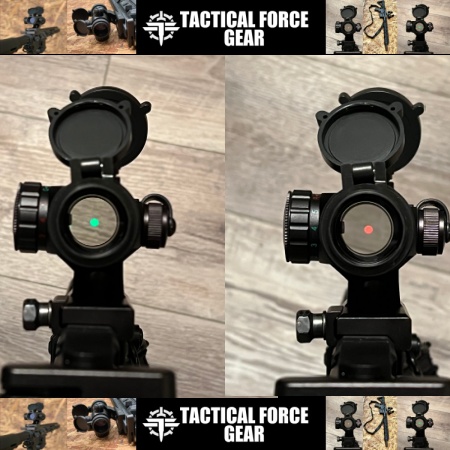If anyone were to ask you why you carry a gun and basic EDC gear, your answer would probably be something like: so you are prepared to defend yourself and handle emergencies. Unfortunately, people make numerous common mistakes that degrade their ability to defend themselves and be prepared for emergencies. On the upside, these mistakes are easy to avoid with a little forethought.
Your Gun Is Your Entire Plan
Carrying a gun is not a complete self-defense plan, nor is it a magic amulet that will keep you safe. While carrying a gun can provide you with a sense of psychological well-being, it does not really work that way in the real world. A gun is just one tool in a personal safety plan. Other tools include training and practice, situational awareness, avoiding confrontations, and good decision-making about where you go and when. It’s tempting to tell yourself that even though it’s a bad part of town or kind of late to stop at the convenience store for a drink, you will be fine because you have your gun. The best way to survive a fight is to avoid it. To paraphrase the Serenity Prayer:
be prepared to face the threats you cannot avoid, avoid the threats you can, and have the wisdom to know the difference.
Not Being Comfortable Carrying a Gun
I am not referring to physical comfort; I am talking about psychological comfort and even being afraid of your gun. Too many times, someone buys a gun because they are concerned about crime, shoots it a couple of times, then carries it around in a holster or bag, even though it makes them uneasy. This is most common in people who did not grow up around guns or who do not shoot much. It manifests in behaviors like frequently checking your gun, constantly touching or adjusting it in the holster, and worst of all, carrying it around with an empty chamber. Constantly touching or fiddling with your gun creates a greater risk of an ND, and frequently adjusting or checking your holster tips people off that you are carrying. If you have a good holster, it will be fine. As for carrying with an empty chamber, the bad guy always has the initiative, and carrying a gun without a round in the chamber will put you even further behind than you already are. The cure? Get some training, shoot a lot, and get comfortable with your gun.
Not Knowing Where You Can/Cannot Carry
If someone asked you right now all the places it is illegal to carry a gun, would you know the answer? Do an internet search and you will find numerous stories of people being charged with a crime for having a gun at a school, courthouse, or in an airport security check. Laws across states and cities vary. Can you carry in a bar, public park, or recreation area? Even in some states that allow permitless carry but still issue permits, you can carry in more places if you have a permit than if you do not. Laws for carrying a knife are even more specific, and concealed firearm permits do not cover knives. USA Carry, the NRA, and other organizations provide detailed descriptions of each state’s gun laws; make use of them.
Carrying Too Much Gear
There is a lot of cool gear on the market, and it can be tempting to buy every tacticool gadget you see. The downside to that is that you will quickly fill up your pockets, perhaps to the point that you won’t be able to find what you need quickly in an emergency. To avoid this, be sure that everything you choose to carry is practical and useful. It is also wise to try to find items that have multiple uses, like multitools, to reduce the number of items you carry.
Not Testing or Trying Out Gear Before Carrying It
Finding a nice piece of gear that is compact and useful is fun and provides a sense of satisfaction. Unfortunately, many people carry items they have never tested or tried to use before adding them to their kit. Carrying a knife or a kubaton for self-defense is a good example. They will not do you much good if you don’t know how to use them. Buying pepper spray with no idea how far it shoots is another mistake, and if you carry a tourniquet, you should know where and how to apply it before you are under pressure.
Unorganized/Inaccessible Gear
Do you carry your spare magazine loose in your pocket? Where is your tourniquet, and how easy is it to access? How about your flashlight? One of the things I learned doing international security work was to know exactly where everything in my kit was located every time I went out. That way, I could find it without even having to look down. Sometimes, having to dress in a specific way will change how we carry some of our gear, but to the maximum extent possible, keep your gear organized and easy to access. That is especially true for spare magazines, medical gear, and even your flashlight.
Ignoring Routine Maintenance
When I was in the Army, we did regular PMCS (preventive maintenance checks) on our equipment to ensure it would be ready when we needed it. Everyone who carries a concealed weapon should do the same thing on their EDC gear. A flashlight or optic with a dead battery is useless in an emergency, so batteries should be changed regularly. Handguns and spare magazines that are carried daily are subject to humidity and dust/lint, and should be cleaned regularly. Even your EDC knife should be sharpened regularly and checked for rust caused by moisture. Yet, many people do not even give a thought to doing routine maintenance and checks on their EDC gear.
Choosing Low-Quality Gear
It may be tempting to jump on Amazon or go to Walmart and buy an inexpensive item for EDC, but do not confuse inexpensive with cheap. If you have read other articles I’ve written, you know that I advocate for function over form when buying guns and gear, but always be certain you are buying quality gear. For example, knives should be corrosion-resistant steel with solid locking mechanisms, and you should choose LED flashlights with rugged, weatherproof casings. This is gear you may have to depend on to save your life.
Neglecting First Aid
It is probably safe to say that most people who carry a concealed firearm do not carry emergency first aid items. Basic trauma items like a field tourniquet or pressure dressing are small, light, and critical inclusions in any EDC kit. Significantly, 40% of all trauma deaths are due to severe bleeding. An adult’s body contains about 5 liters of blood. Shock occurs once you lose around 15%, or 0.75 liters, of blood. A severe leg wound that affects the femoral artery will bleed at a rate of 1.5 liters per minute. At that rate, death can occur in minutes. Get training in first aid and carry something to control bleeding.
Avoid EDC Mistakes
People go to a lot of expense and effort to carry a firearm for self-defense, but just carrying a gun is not enough. Always make the extra effort to ensure you are carrying the gear you need and that it is practical and sturdy. And above all, take some training courses and practice on a regular basis.
Read the full article here




